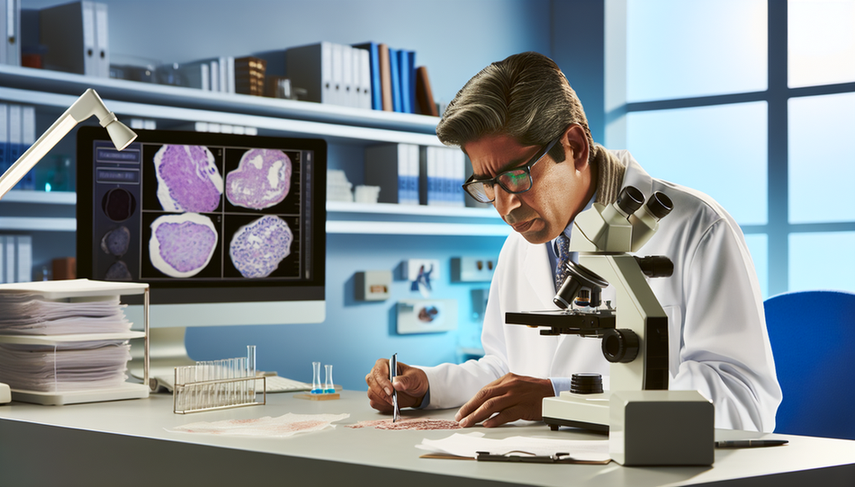Lymphoma Diagnosis: Lymph Node Biopsy, Histological Classification, and Differentiating Hodgkin vs Non-Hodgkin Lymphoma

Dear colleagues, the diagnosis of lymphoma is a complex process that requires a combination of clinical and laboratory techniques to differentiate between the various forms of this disease. The lymph node biopsy is an essential tool in this process, allowing for histological evaluation and precise classification of lymphomas. In this article, we will explore current methods for lymphoma diagnosis, focusing on the importance of lymph node biopsy and histological classification.
Diving Deeper into Lymphoma Diagnosis
The diagnosis of lymphoma begins with the identification of suspicious lymphadenopathy, which is often evaluated using imaging techniques such as PET scans (positron emission tomography). However, the definitive confirmation of lymphoma and its classification into specific subtypes depend on the lymph node biopsy. This procedure allows for the acquisition of sufficient tissue for detailed histological analysis, which is crucial for distinguishing between Hodgkin lymphoma and non-Hodgkin lymphoma.
The histological classification of lymphomas is based on morphological and phenotypic characteristics, complemented by genetic and molecular analyses. According to a recent study, lymph node biopsy remains the gold standard for lymphoma diagnosis, enabling accurate evaluation of nodal architecture and identification of specific immunohistochemical markers [1]. Furthermore, the integration of advanced techniques such as high-throughput sequencing has improved the ability to identify specific mutations that may influence prognosis and treatment [2].
In the case of cutaneous lymphomas, such as CD8+ T-cell lymphoma, biopsy is also fundamental in differentiating between benign and malignant lymphoproliferative disorders, allowing for more precise clinical management [3].
Conclusions
In conclusion, lymph node biopsy is an indispensable tool in the diagnosis of lymphoma, providing the foundation for accurate histological classification. This classification is essential for guiding treatment and predicting patient prognosis. As we advance into the era of personalized medicine, the integration of molecular and genetic techniques in the diagnostic process promises to further enhance the accuracy and effectiveness of lymphoma treatment.
References
- [1] A practical approach to the modern diagnosis and classification of T- and NK-cell lymphomas.
- [2] Discriminating lymphomas and reactive lymphadenopathy in lymph node biopsies by gene expression profiling.
- [3] Clinical, histopathological and prognostic features of primary cutaneous acral CD8+T-cell lymphoma and other dermal CD8+cutaneous lymphoproliferations.
Created 4/1/2025
